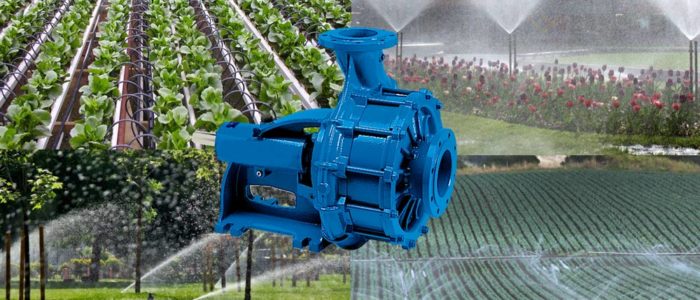Irrigation Pumps Designed For Water Lifting or Jet Sprinkling
Article Chapters
Irrigation Pumps: Water Lift Technology For Field, Poly Tunnel or Garden
One type of pump that is indispensable for providing consistent water flow and pressure during the summer months is the irrigation pump, primarily used for groundwater pumping, field or garden irrigation.
Defined as ‘water-lift’ technology, an irrigation pump is designed to pump water from a lower to a higher level, known as surface irrigation, or to raise water pressure for the purpose of spraying or sprinkling (micro-irrigation). Irrigation pumps can also be installed in water butts for rainwater harvesting, and to draw water from wells and boreholes.
The critical importance of irrigation pumps in UK agriculture was made starkly clear in May 2019 when the Environment Agency downgraded the season due to lower than average rainfall. In response, the Agriculture and Horticulture Development Board (AHDB) strongly advised that irrigation strategies should be reassessed, water distributed as efficiently as possible, and pipes and equipment checked to ensure water is not leaked and lost.
The frequent effects of climate change means a constant rising demand for efficient, controlled water delivery systems. The need for irrigation pump technology continues to grow apace, whether within the agriculture and food-growing industry, large scale market gardens, allotments or a domestic garden setting.
An irrigation pump used as a jet sprinkler will require the correct sprinkler pump size
The majority of irrigation pumps are known as ‘centrifugal’ pumps, which operate by using an “impeller” to spin the water rapidly through the pump casing, directed to the pump outlet. They posses a “wet inlet”, i.e. water in both the intake (inlet) pipe and the casing when the pump is started.
Centrifugal irrigation pumps may have more than one impeller and casing – known as ‘multi-staging’ – where the water is passed from one impeller to another with an increase in pressure occurring each time. Each impeller/casing combination is referred to as a “stage”. A system which uses an irrigation pump as a jet sprinkler will require the correct sprinkler pump size based upon the number of sprinkler heads in operation, GPM (gallons-per-minute) and PSI (pounds-per-square-inch).
Centrifugal pumps are widely used in agriculture but where a very low flow is required with discharges of less than 2 litres per second, Positive Displacement pumps can be used under certain condition, such as nurseries, vegetable growing (using drip irrigation), and in domestic irrigation.
Displacement pumps are more commonly known as piston pumps, diaphragm pumps or rotary pumps, and tend to be used for moving very thick liquids by very precise flow volumes or very high pressures. Other applications include fertiliser injectors, spray pumps, air compressors, and hydraulic systems for machinery.
The right type of irrigation pump for uniform surface irrigation or micro irrigation
Selecting the right type of irrigation pump is all-important for optimal, uniform water distribution, whether for surface irrigation or micro-irrigation.
Surface Irrigation – used for thousands of years, involves moving water across the surface of agricultural land, typically subdivided into furrow or border strips.
Micro Irrigation – primarily installed into green houses, poly-tunnels or suspended from above where crops are also under cover. Smaller, precise quantities of water (typically between 0.2 to 4.0 gallons per hour) are delivered via micro sprinklers or button drippers.
Drip Irrigation – operating under low pressure and designed for perfect uniform flow, provides the most efficient delivery system where individual water droplets are targeted exactly at the required location.
Impact Sprinkler Irrigation – typically an impact or gun sprinkler, commonly used in domestic settings, such as a garden lawn or flowerbeds.

